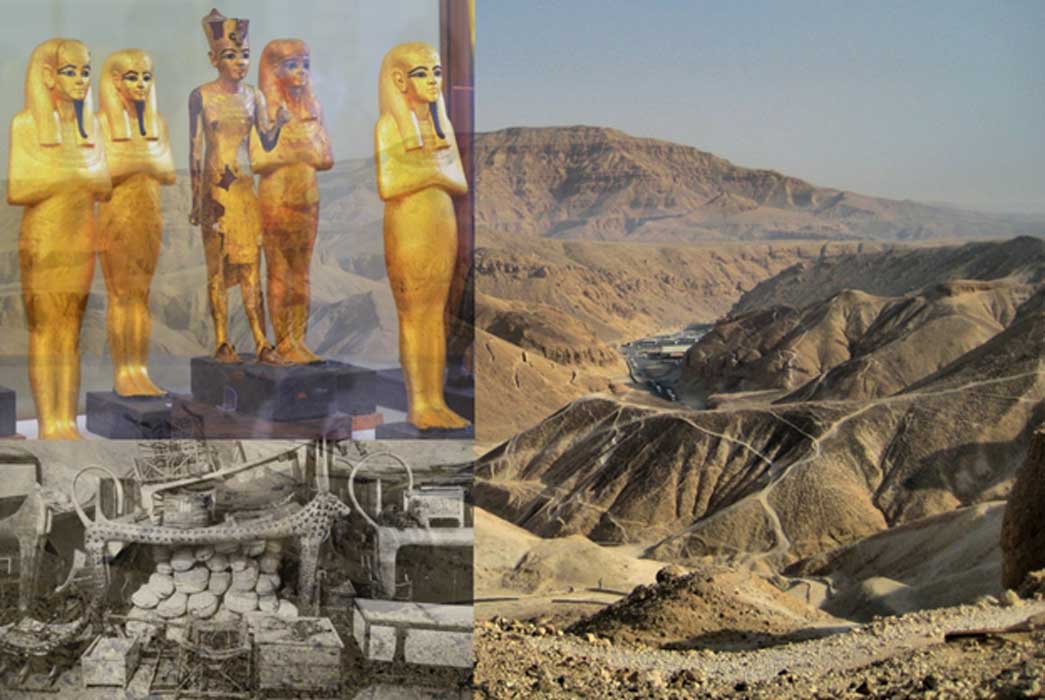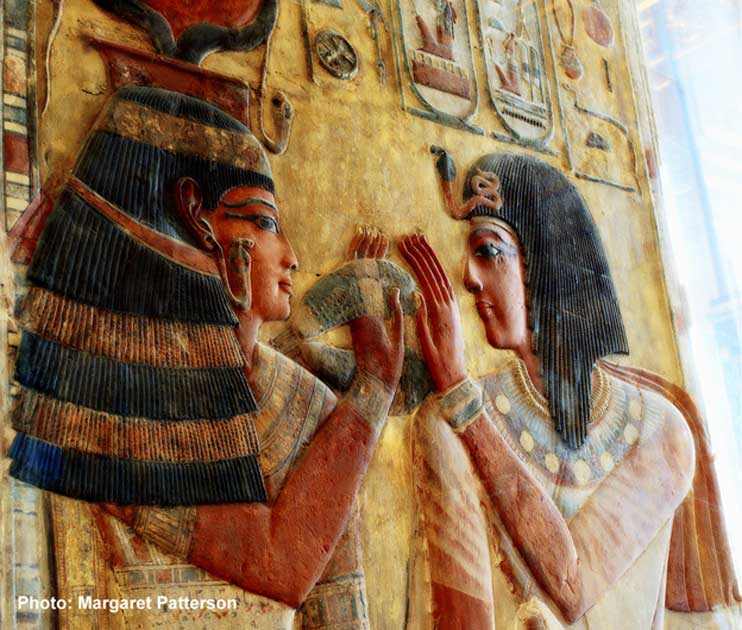
When the Falcon Had Flown: Understanding the Process of Stocking Pharaonic Tombs – Part I
Given their overwhelming belief in the Afterlife, did ancient Egyptian royalty organize their tombs in advance of their eventual demise; or were preparations made post mortem? Although we do not possess any single book or set of texts that provide an answer to this fundamental question; there do exist writings, paintings in tombs and inscriptions on temple walls that provide clues about this process.

In this stunning relief, originally from the tomb of Seti I, the goddess Hathor is shown welcoming the king into the underworld by offering her menat necklace as a symbol of her protection. Louvre Museum, Paris.
The Valley of Gold
“Today, 3,000 years after it was abandoned, the ‘Valley of the Kings’ remains a solemn and holy place, its emptied sepulchers reflecting still the might of pharaoh’s rule and allowing a brief, tantalizing glimpse into the ancient Egyptian soul. Harsh and unyielding, the royal wadi is a picture of changelessness, emptiness, death; and yet, when Fortune favors, it possesses an extraordinary capacity to surprise,” write Dr Nicholas Reeve and Richard Wilkinson.





